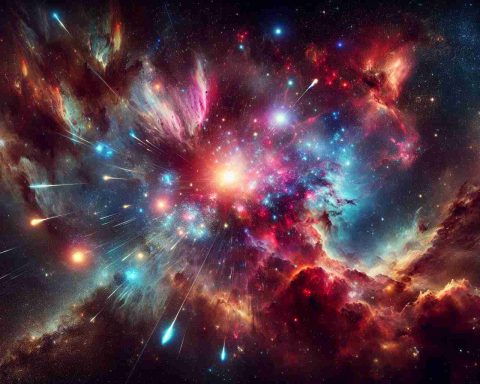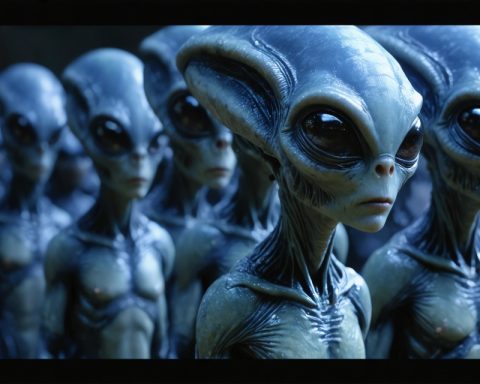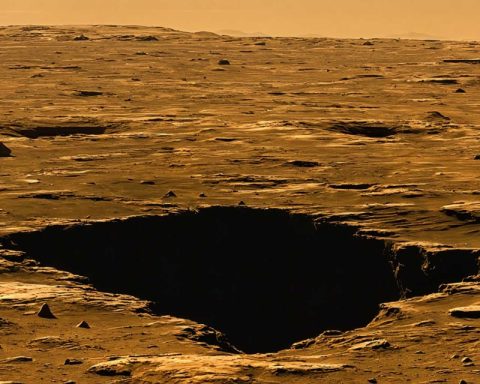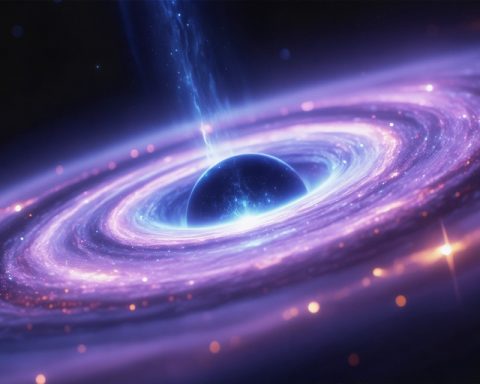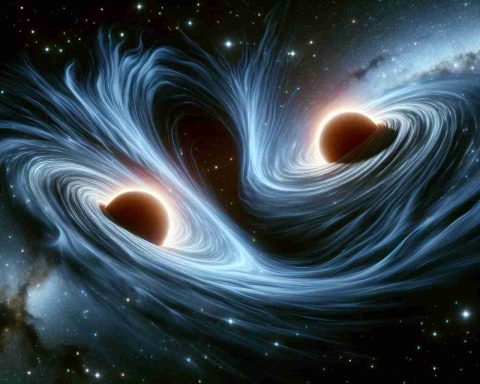The cosmos surprises us again! Astronomers have unveiled the first detailed image of a star beyond our Milky Way — and it’s teetering on the edge of a cataclysmic event.
The European Southern Observatory (ESO) has made a significant breakthrough in astronomy by capturing a close-up of WOH G64, a colossal red supergiant star located in the Large Magellanic Cloud, about 160,000 light-years away. This massive star, which dwarfs our Sun by at least 2,000 times, is enshrouded in gas and dust, hinting at its approaching supernova fate.
In December 2020, the team utilized the cutting-edge Very Large Telescope Interferometer in Chile’s Atacama Desert to observe the star. The image reveals an intricate, egg-shaped cocoon formed from material shed during its violent eruptions over decades. Surrounding this star is an expansive elliptical ring of dust, a remnant of its stellar activity that could redefine our understanding of stellar evolution.
Astronomers remark that WOH G64 shows behaviors reminiscent of supernova SN1987A, suggesting a dramatic end could be near. The groundbreaking imaging, powered by the advanced GRAVITY instrument, allows scientists to witness the final moments of a star’s lifecycle, emphasizing the turbulent beauty of the universe.
As researchers continue to analyze this remarkable find, the expectation of a spectacular cosmic event looms on the horizon, promising to deepen our understanding of the life and death of stars.
Stellar Revelation: The Distant Red Giant Nearing Its Supernova Finale
Astronomers have recently unveiled a stunning image of WOH G64, a massive red supergiant star situated in the Large Magellanic Cloud, approximately 160,000 light-years from Earth. This groundbreaking discovery, facilitated by the European Southern Observatory (ESO), sheds light on the star’s impending transformation into a supernova, a transformative event in stellar evolution.
The Significance of WOH G64
WOH G64 is remarkable, not just for its size—approximately 2,000 times larger than our Sun—but also for the insights it offers into the life cycle of stars. The star is currently at a late stage of its life, characterized by significant mass loss due to violent eruptions. The advanced imaging techniques employed, particularly through the Very Large Telescope Interferometer (VLTI) in Chile, have provided an unprecedented view of the structure surrounding this giant.
Features of the Discovery
1. Impressive Imaging Technology:
– The use of the GRAVITY instrument allowed astronomers to capture this intricate image of WOH G64, revealing an egg-shaped cocoon formed from the material the star has shed over decades.
2. Unique Stellar Environment:
– The freshly captured image showcases an expansive elliptical dust ring, a remnant of WOH G64’s tumultuous stellar lifecycle, indicative of the processes leading up to a supernova event.
3. Relevance to Stellar Evolution:
– This discovery not only enhances our understanding of WOH G64 but also draws intriguing parallels with supernova SN1987A, suggesting possible similarities in their final explosive stages.
How This Impacts Astronomy
The detailed observations of WOH G64 present a unique opportunity for astronomers. By studying this colossal star’s behavior and the characteristics of its environment, researchers can refine their models of stellar evolution and gain a deeper understanding of supernova phenomena. This research is vital, as it provides a rare glimpse into the lifecycle that many stars, particularly red supergiants, undergo.
Predictions and Future Research
As astronomers continue to analyze the data from WOH G64, the anticipation of a potential supernova event adds a layer of excitement to ongoing research. The insights gained from this distant star may lead to advancements in understanding other similar celestial bodies and their explosive endings. With the cosmos continually offering fresh mysteries, the future of astronomical exploration looks promising.
Conclusion
The imagery of WOH G64 underscores the dynamic nature of the universe and the complex life cycles of its stars. With every discovery, we inch closer to unraveling the intricate processes that govern stellar formation, evolution, and demise. As telescopes and imaging technologies advance, the quest to comprehend our universe becomes ever more thrilling.
For additional insights on celestial phenomena and astronomical research, visit ESO.





